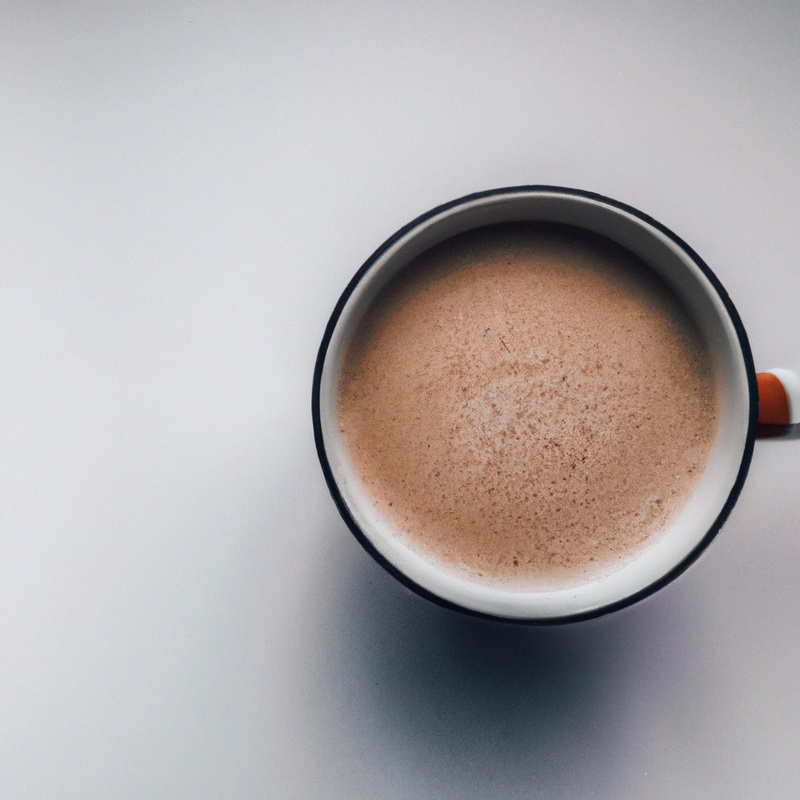Key Takeaways:
- The ideal coffee-to-milk ratio for lattes is typically 1:3, meaning one part coffee to three parts milk.
- For cappuccinos, a balanced coffee-to-milk ratio is around 1:1, with equal parts coffee and milk.
- Finding the perfect ratio is subjective, so feel free to experiment and adjust according to personal taste preferences.
- The quality and type of coffee beans, as well as the size and texture of milk froth, also influence the overall flavor and balance of the drink.
Are you tired of constantly experimenting with your coffee-to-milk ratio, only to end up with a mediocre latte or cappuccino? Well, fret not, because in this article, we’ll crack the code to achieving the perfect coffee-to-milk balance for your favorite espresso-based drinks.
Understanding the coffee-to-milk ratio is essential to crafting that velvety, creamy texture we all love.
We’ll dive into what exactly the ratio means and why it holds such significance. Plus, we’ll explore the ideal ratios for lattes and cappuccinos and even provide some tips for frothing milk like a pro.
Say goodbye to coffee shop disappointments and get ready to elevate your home brewing game!
| Ratio | Lattes | Cappuccinos |
| 1:1 | No milk foam, heavy espresso taste | Thin milk foam, strong espresso taste |
| 1:2 | No milk foam, balanced espresso taste | Medium milk foam, balanced espresso taste |
| 1:3 | No milk foam, light espresso taste | Thick milk foam, light espresso taste |
Understanding the Coffee-to-Milk Ratio
The coffee-to-milk ratio determines the balance between the two ingredients in your latte or cappuccino. Understanding this ratio is key to creating the perfect coffee beverage.
What is a coffee-to-milk ratio?
A coffee-to-milk ratio refers to the proportion of coffee to milk used in drinks like lattes and cappuccinos. It determines the balance between the coffee’s flavor and the creamy texture of milk.
The ideal ratio can vary depending on personal preference, but a common standard is 1 part coffee to 2 parts milk for a latte and 1 part coffee to 1 part milk for a cappuccino.
Adjusting the ratio allows you to customize the flavor and strength of your drink. Experiment to find what suits your taste buds!

Why is the coffee-to-milk ratio important?
The coffee-to-milk ratio is important because it determines the taste and texture of your latte or cappuccino.
Balancing the right amount of coffee and milk allows you to create the desired flavor profile and the perfect level of creaminess.
Too much milk can dilute the coffee’s flavor, while too little milk can result in a strong, overpowering taste.
Getting the ratio right enhances the overall drinking experience and ensures a well-balanced and enjoyable cup of coffee.

Factors to consider when choosing the ratio
When choosing the coffee-to-milk ratio for your lattes and cappuccinos, there are a few factors to consider:
- Taste preference: Consider whether you prefer a stronger coffee flavor or a creamier, milkier taste.
- Espresso strength: The strength of your espresso shot will also impact the ratio. A stronger espresso may require less milk.
- Milk type: Different milk types can affect the flavor and texture. Experiment with whole milk, skim milk, or alternative milks like almond or oat milk.
- Cup size: The size of your cup or mug will determine how much coffee and milk you need to achieve the desired taste and consistency.
- Foam preference: Some people enjoy more foam on top of their drinks, so you may need to adjust the ratio accordingly.
By considering these factors and experimenting with different ratios, you can find the perfect balance of coffee and milk for your latte or cappuccino.
The Perfect Coffee-to-Milk Ratio for Lattes
For the perfect latte, the coffee-to-milk ratio is generally 1:3 or 1:4. Adjust it to suit your personal preference.
What is a latte?
A latte is a popular espresso-based drink that consists of espresso, steamed milk, and a small layer of foam on top. The word “latte” comes from the Italian caffè latte, which means “milk coffee.” The coffee-to-milk ratio in a latte is typically 1 part espresso to 3 parts milk, but it can vary depending on personal preference.
Lattes are often enjoyed with flavored syrups or toppings like whipped cream.
They provide a creamy, smooth, and slightly sweet taste that is perfect for coffee lovers who enjoy a milky and frothy beverage.

Ideal coffee-to-milk ratio for lattes
The ideal coffee-to-milk ratio for lattes is usually 1:3.
This means using one part of espresso and three parts of steamed milk.
However, the ratio can vary depending on personal preference.
Some people prefer a stronger coffee flavor and opt for a 1:2 ratio, while others prefer a milder taste and go for a 1:4 ratio.
Ultimately, it’s all about finding the right balance that suits your taste buds.
Don’t be afraid to experiment and adjust the ratio to your liking.
Adjusting the ratio for personal preference
Adjusting the coffee-to-milk ratio for your latte or cappuccino is all about personal preference.
There are no hard and fast rules.
Start with equal parts coffee and milk and go from there.
If you like a stronger coffee flavor, increase the amount of coffee.
If you prefer a creamier texture, add more milk.
Experiment with different ratios until you find the perfect balance for your taste buds.
Remember, it’s all about what you enjoy!
Achieving the Perfect Coffee-to-Milk Ratio for Cappuccinos
To achieve the perfect coffee-to-milk ratio for cappuccinos, aim for a balance between the boldness of espresso and the creaminess of frothed milk.
What is a cappuccino?
A cappuccino is a popular espresso-based coffee beverage.
It is made by combining equal parts of espresso, steamed milk, and milk foam.
The espresso provides a strong and rich flavor, while the steamed milk adds sweetness and creaminess.
The milk foam on top gives the cappuccino its signature frothy texture.
The balance between these three elements is key to achieving the perfect cappuccino taste.
Play around with the ratios to find your preferred level of espresso, milk, and foam.
Enjoy!
Ideal coffee-to-milk ratio for cappuccinos
The ideal coffee-to-milk ratio for a classic cappuccino is 1:1.
This means using equal parts of espresso and steamed milk to achieve a balanced and creamy flavor.
Start by pulling a shot of espresso, then steam the milk until it reaches a velvety texture.
Pour the milk into the espresso, aiming for an even distribution.
Remember, this ratio can be slightly adjusted based on personal preference.
Feel free to experiment and find the perfect balance for your taste buds!
Tips for frothing milk for cappuccinos
To froth milk for cappuccinos, start with cold milk and a clean pitcher. Place the steam wand just below the surface of the milk and turn on the steam.
Keep the wand at an angle and move it in a circular motion to create a whirlpool effect.
Avoid creating large bubbles by keeping the wand near the surface. Stop frothing when the milk doubles in volume and has a smooth, creamy texture.
Pour the frothed milk gently over your espresso.
Enjoy your perfect cappuccino!
Frequently Asked Questions (FAQs)
Can the coffee-to-milk ratio vary based on bean type?
The coffee-to-milk ratio can indeed vary based on the type of bean you use. Different beans have different flavors and strengths, and this can affect how much milk you need to balance out the taste.
For example, a strong espresso blend might require less milk compared to a milder coffee bean.
It’s all about finding the right balance that suits your personal preference. Experiment with different ratios to discover what works best for you.
How does the strength of the coffee affect the ratio?
The strength of the coffee can significantly affect the ratio of coffee-to-milk in lattes and cappuccinos.
If you have a stronger brew, you may want to use more milk to balance out the intensity of the coffee.
On the other hand, if you have a milder coffee, you can use less milk to let the coffee flavors shine through.
Experiment with different ratios to find the perfect balance for your taste preferences.
Remember, there’s no one-size-fits-all ratio, so feel free to adjust it to suit your liking.
What is the difference between a latte and a cappuccino?
A latte is a coffee-based drink made with espresso and steamed milk, typically topped with a small amount of foam. It has a higher milk-to-coffee ratio, resulting in a creamier and milder flavor.
On the other hand, a cappuccino is also made with espresso, but it has equal parts of espresso, steamed milk, and foam.
This gives it a stronger coffee flavor and a drier texture. The different ratios of milk and foam make these two drinks distinct in taste and texture.
Can lactose-free or non-dairy milk be used in these ratios?
Yes, you can definitely use lactose-free or non-dairy milk in the coffee-to-milk ratios for lattes and cappuccinos. Whether you’re using lactose-free milk, almond milk, soy milk, or any other non-dairy alternative, you can adjust the ratio to your taste.
It’s all about finding the right balance of flavors that you enjoy.
So go ahead and experiment with different ratios until you find the perfect one for your latte or cappuccino!
Can the coffee-to-milk ratio be adjusted for alternative brewing methods?
Yes, the coffee-to-milk ratio can be adjusted for alternative brewing methods.
The best ratio will depend on your personal taste preferences and the specific brewing method you are using.
For example, if you are making a latte with a French press, you may want to use a higher coffee-to-milk ratio compared to a latte made with an espresso machine.
Experimentation is key to finding the perfect balance that suits your individual palate.
Final Verdict
Understanding the coffee-to-milk ratio is crucial for achieving the perfect lattes and cappuccinos.
The ideal ratio for lattes is 1:3, while for cappuccinos it is 1:1.5. Adjusting the ratio allows for customization based on personal preference.
Factors such as bean type and coffee strength can also influence the ratio.
Additionally, alternative milk options can be used, and the ratio can be adjusted for different brewing methods.
By mastering the coffee-to-milk ratio, you can create exceptional lattes and cappuccinos from the comfort of your own home.
